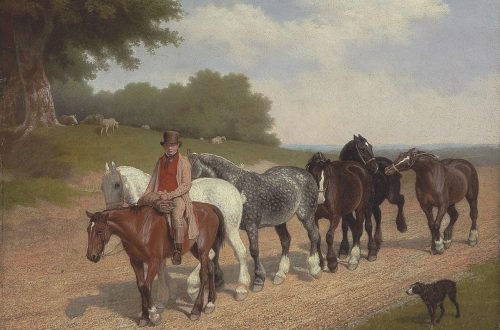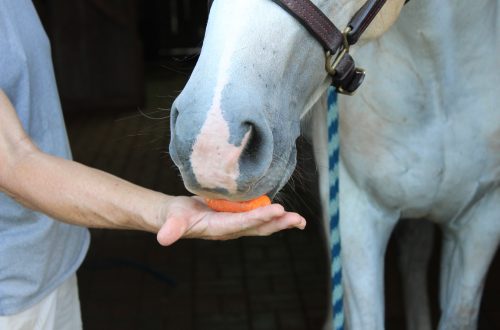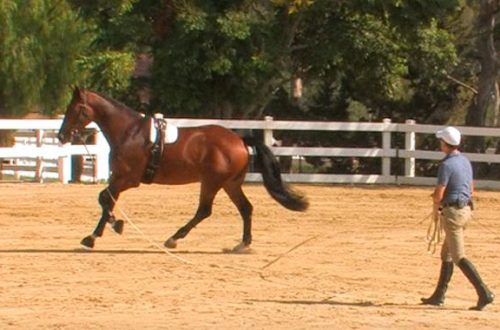
A few words about the “independence” of the shankel
A few words about the “independence” of the shankel
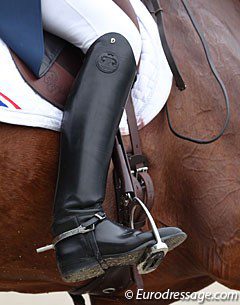
We are often told that while riding our hands should be independent of our body. This means that the shoulders and elbows should be relaxed and the arm able to move back and forth while the torso remains upright. We can easily monitor ourselves – check how the arms are bent at the elbows, how they move, whether they are relaxed and independent. However, there is another means of control that must be independent – we must be able to ride with independent shanks. This does not mean that they are legs independent of the body – they must be independent of each other!
“We must use one leg so that the other does not stiffen and work in sync with the first against our will. The leg that does not work should not move, in other words, it remains independent of the actions of the other leg,” says Nuno Oliveira.
Making the legs “independent” of each other seems like a fairly simple task, but in practice it is extremely difficult for several reasons.
First of all, riders tend to overlook what their “other” leg is doing. Imagine, for example, that the terrier asks you to pull back your left leg and press it against the side of the horse, and you do. Okay, right? But it’s unlikely that you automatically think: “What happens to my right leg when I worked with my left one”?
However, it’s worth considering! Without noticing it, following the instructions of the trainer, we simultaneously give the horse a signal with the opposite leg, moving it back and pressing it. The second leg also gives a message, confusing the horse and distorting the desired command.
I especially see this rider error during canter lifts. I ask the student to bring the horse into a canter, and now his outer leg is pulled back and pressed to his side. The rider then asks why the horse simply speeds up the trot, managing to run almost half of the circle, although he continues to push it with the outer leg to the side behind the girth. The rider is surprised why the horse does not understand what they want from it. Then I ask the student to stop and ask for the gallop again. But this time he will need to watch his inner leg – he must remain relaxed and not move from his place. That’s when we get a gallop. The rider simultaneously squeezes the horse with the inside and outside legs, so the horse accelerates. She feels pressure from both sides, so she responds accordingly – she trots faster.
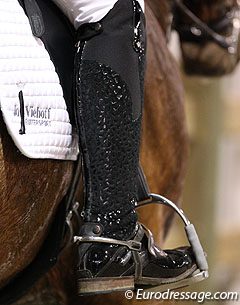
This is a simple example of what happens if we cannot work each part of our body separately. The task becomes even more difficult when we need to ask the horse to perform more complex movements requiring one action from one leg and a different action from the other.
If you are not sure that your legs are independent of each other, it is useful to start with a step. Ask the horse to step aside from the influence of the inside leg and ask yourself what the outside leg is doing at that time. Does he push the horse to the side? Or remains free and independent? This is much more difficult than you might think.
Tight hips are usually the source of this problem. Our bodies are not designed by nature to sit on a horse, and therefore we clamp our hips, “defending ourselves”, we do it unconsciously.
To relax your hips while sitting in the saddle, you must actively think about it. You have to sit on the horse and think – “I open the angle of the hip joint, I relax the legs.” Once you can do this and can maintain this state constantly, you can use the legs independently of each other – one leg, acting on the horse, will not cause any unconscious movement of the other leg.
This may all sound too simple, but the next time you mount a horse, pull your inside leg back and see what happens to your inside…
This seemingly insignificant “subtlety” will open up a whole new world for you – you will begin to understand what you are saying to the horse when you act on it with your legs.
Sarah Vorn (source); пerevod Valeria Smirnova.



